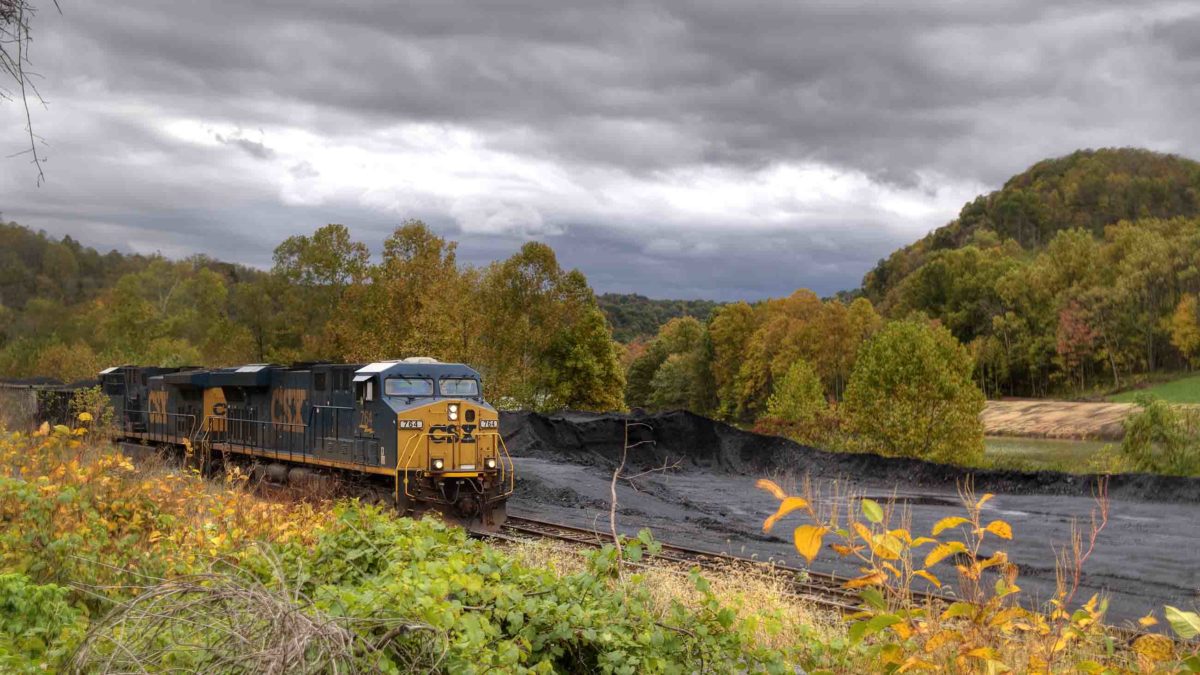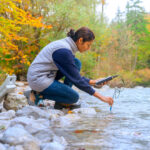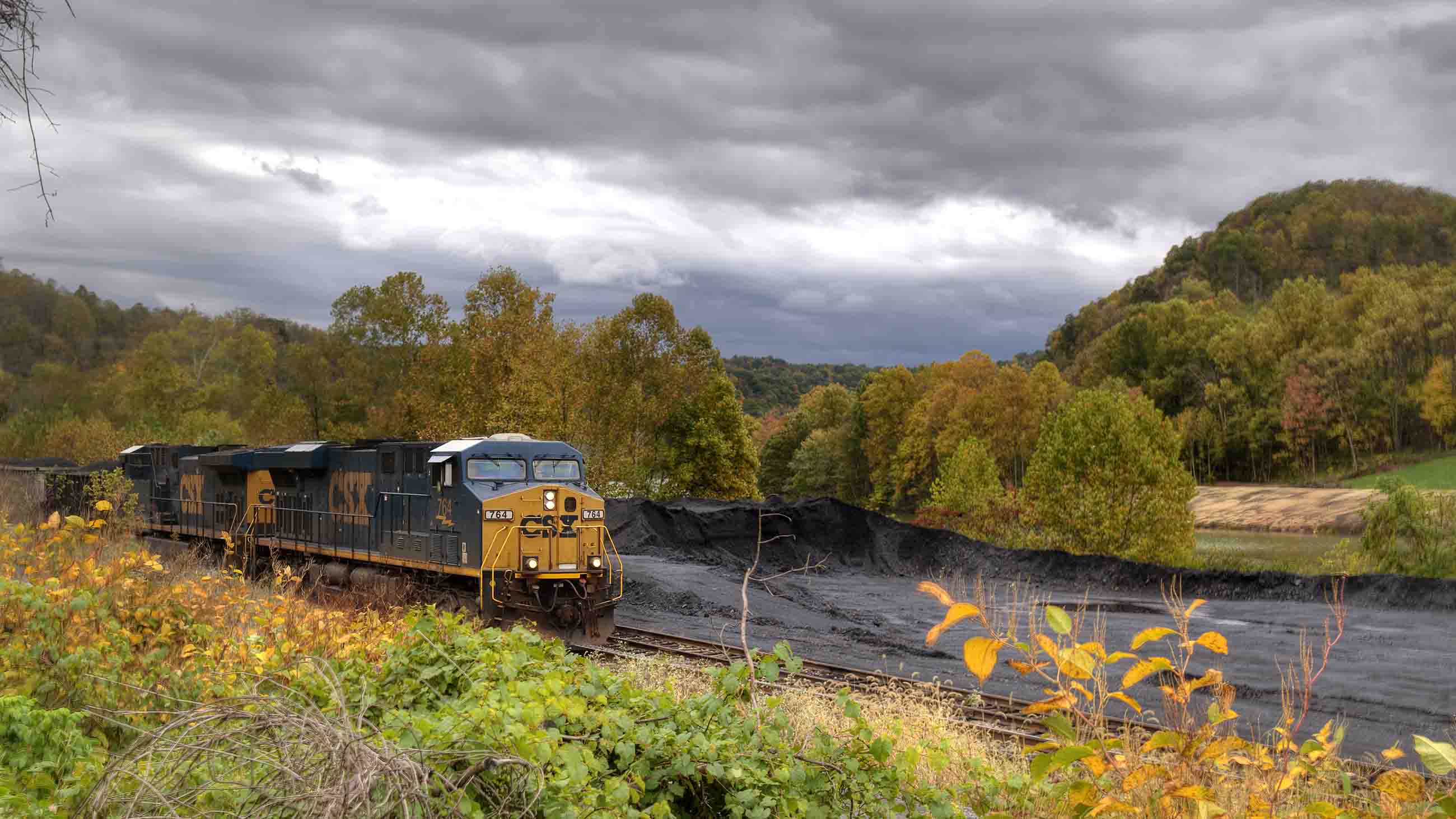The U.S. Environmental Protection Agency moved on Tuesday to formally replace federal regulations on greenhouse gas emissions from coal-fired power plants, proposing to instead allow states to set their own rules.

Despite President Trump’s promises in West Virginia, experts say the coal train has left the station.
Visual: Flickr/Cathy
“We love clean, beautiful West Virginia coal,” President Donald Trump announced at a rally in the state that evening, ignoring an analysis by his own administration that suggests replacing Obama’s Clean Power Plan, which aimed to steer the country away from coal and toward renewable energy like wind and solar, could lead to 1,400 premature deaths per year by 2030.
While the EPA has said other pollution rules could be used to bring down that number, Trump’s push for deregulation is strong. Indeed, the agency’s unveiling of what it has dubbed the Affordable Clean Energy Rule comes just weeks after the announcement of a proposal to halt fuel efficiency standards for cars.
Still, despite Trump’s promises on coal, market forces in the form of cheap natural gas and improvements in solar and wind technology mean the industry is unlikely to enjoy the type of comeback its supporters may be hoping for.
“The world has shifted dramatically in the last few years to the point where we are going to get pretty close to the targets in the Clean Power Plan even without it,” Jason Bordoff, director of Columbia University’s Center on Global Energy Policy, told E&E News.
According to the U.S. Energy Information Administration, for example, the switch from coal to natural gas for power generation accounts for 63 percent of carbon dioxide emissions reduction from 2005 to 2016.
Still, experts point out, the plan provided a framework for lowering emissions over time, and created barriers to upgrading or building new coal plants. The public will now have 60 days to comment on the proposal before it becomes finalized.
Also in the news:
• Hurricane Lane moved in on Hawaii Thursday, with its outer bands causing landslides and flooding on the state’s Big Island. Five people visiting from California were rescued from a flooded house in Hilo, while two campers had to be airlifted out of the Waipio Valley. Though the storm was downgraded to a Category 3 by Thursday afternoon, Gov. David Inge advised residents to stock up on two weeks’ worth of food and water. As of Friday, the National Weather Service (NWS) said the biggest threat has shifted to the islands of Maui and Oahu, with wind speeds potentially reaching 120 miles per hour. If Lane’s center crosses over land, it will be the first hurricane to make landfall in nearly three decades. Still, even if the storm remains over water, the Service warns it could cause serious damage. “Regardless of the hurricane track, life threatening impacts will extend far beyond the center position of Lane,” the NWS emphasized in a statement. (CNN)
• At least three outbreaks of African swine fever, a fatal disease of pigs, have been confirmed in China, the world’s largest producer — and consumer — of pork. While the virus isn’t a threat to humans, it’s highly contagious and is already wreaking havoc on farming operations both big and small. Tailoring a response to suit them all, says Yang Hanchun, a swine viral disease scientist at China Agricultural University in Beijing, has been the biggest challenge. In the northeastern city of Lianyungang, authorities have culled 15,000 pigs. In other regions, including the city of Shenyang, where the first outbreak was reported earlier this month, the government has disinfected farms, processing facilities, and markets, and thousands of sick and exposed hogs have been killed. (Science, Associated Press)
• A new study calls into question the benefits of supervised injection sites, clean facilities where IV drug users can shoot up under the watchful eyes of public health workers. Scientists at the University of South Wales collected dozens of published studies on the sites, weeded out those with the most obvious methodological flaws, and analyzed the remaining eight to assess the sites’ impacts on overdose mortality, syringe sharing, and other health and safety metrics. The meta-analysis, considered the most rigorous to date, found that outside of a small reduction in drug-related crimes, the sites showed no discernible public health and safety benefits. “That is not to definitively say that supervised consumption sites don’t work,” writes Vox’s German Lopez. “It’s more that we simply don’t know yet.” Experts note that injection sites tend to attract a high-risk population of users, which could skew study results. And the South Wales team itself acknowledges that eight studies is too small a body of work to draw definitive conclusions from. The takeaway: We need more high-quality research on supervised injection sites to inform public policy. (Vox)
• Niagara Falls State Park attracts thousands of visitors every day — visitors who, for months, have unknowingly been walking past piles of dirt containing radioactive waste. Discovered in May during construction to revamp the park’s entrance, the state’s Department of Environment Conservation confirmed tests of the soil revealed low levels of radioactivity. Though officials insist the material poses no danger to public health, work began on Thursday to move it out of state to a facility in Ohio. While some city workers and tourists were taken aback by the discovery, others characterized the finding as business as usual. “Hey, this is Western New York,” Niagara Falls City Planner Thomas DeSantis told The Buffalo News. “You dig in something that was put down in the 1940s or 1950s, you might find something you didn’t expect.” (The Buffalo News)
• An early August outbreak of the Ebola virus in the Democratic Republic of Congo (DRC) — the second such outbreak this year — has steadily worsened and spread, health officials reported this week. The count as of Thursday included more than 100 reported cases and some 61 deaths — up from 50 known deaths on Monday. The World Health Organization is especially concerned because this latest outbreak in the DRC’s northeastern region has been reported in multiple locations — and is in a conflict area which includes “red zones” where medical teams cannot safely travel. That means that isolating the virus (Ebola Zaire) with strategic use of vaccines is far more difficult than in the early outbreak in which spread was shut down. Further, the infected region is close to the DRC’s borders with both Uganda and Rwanda, raising the possibility of cross-border transmission. “That’s what keeps me up at night,” said one WHO official. (NPR)
• The director of Michigan’s Department of Health and Human Services, Nick Lyon, will stand trial on three felony charges related to his handling of the 2014 water crisis in Flint, which unfolded after the city switched its drinking water from Detroit to the Flint River, leading to severe and lasting contamination. Lyon faces two felony counts for involuntary manslaughter and one for misconduct in office due to an outbreak of legionella bacteria shortly after the switch took place. While the official tally shows that 90 people fell ill, and 12 died, as a result of exposure to the bacteria, a Frontline investigation suggests the death toll could be much higher. Lyon is the first of more than a dozen state and local officials headed to trial after the Michigan state attorney general opened a criminal investigation in January 2016 into the handling of the crisis. (PBS)
• And finally: In an eminently modern saga scripted for the digital age, a young science enthusiast and frequent Twitterer known only as Naomi H. took to the social network earlier this week to announce that she’d been awarded an internship at #NASA — and did so as only a young person with a cheeky affinity for profanity and an uncomplicated understanding of the Internet could do. Admonished gently by fellow Twitter user Homer Hickam to watch her language, Naomi H. responded with a scatological volley involving the male anatomy — apparently not recognizing Hickam as a famed author, former NASA engineer, and current member of the National Space Council. The rich moment of “whoops!” quickly went viral, particularly when news emerged that the internship had been revoked — an outcome that Hickam later said, in a now-deleted personal blog post (archived version here), that he did not seek. Lessons in the perilous vortex of online indiscretion having been learned, the two reportedly exchanged apologies, and by Thursday, both appeared to have deleted their Twitter accounts. (USA Today)










